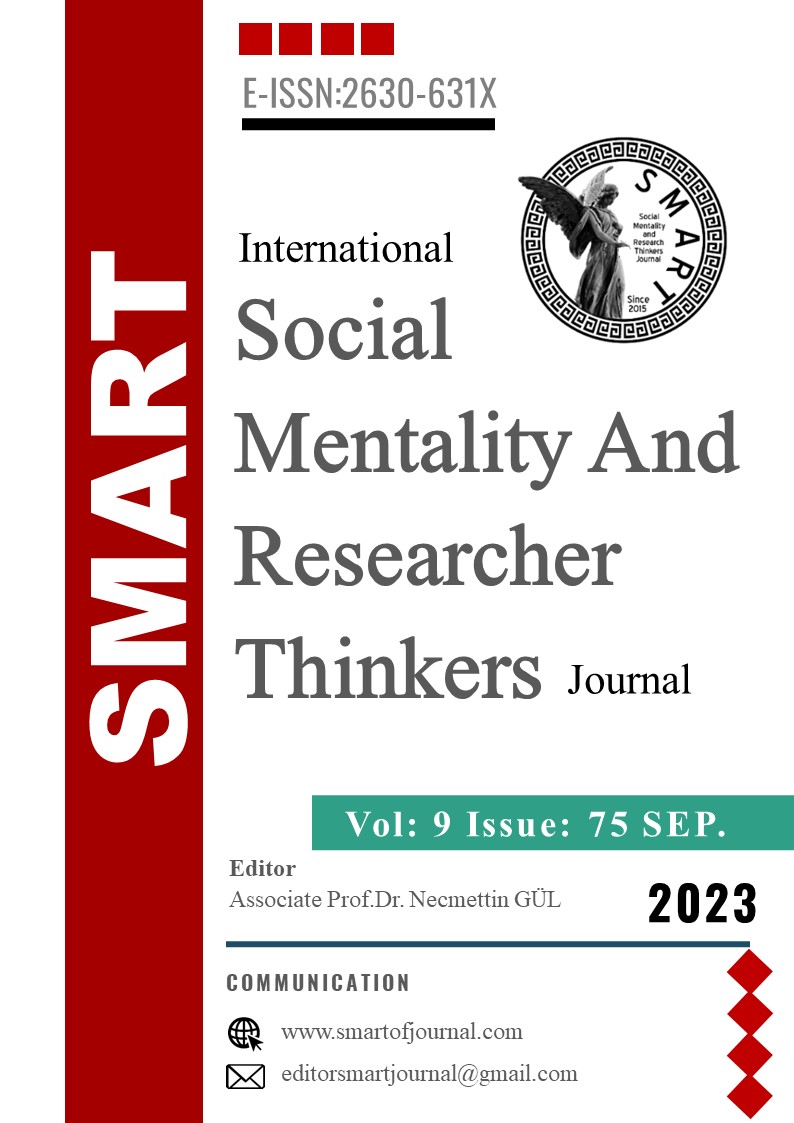Author :
Abstract
Sosyal medya kullanımının yaygınlaşmasıyla paylaşılan içerikler artık neredeyse her haneye ve her yaş grubuna ulaşır hale geldi. Kullanıcıları artık sadece alıcı değil içerik üreticisi konumuna da taşıyan dönüşüm özellikle Twitter gibi yaygın platformları manipülasyona açık hale getirdi. Sosyal medya mecralarında denetimini hâlâ yeterli seviyede olmaması ve teyit mekanizmasını barındırmaması kamuoyu üzerinde algı oluşturma çabalarını beraber getirmiştir. Bu noktada Rusya'nın 24 Şubat 2022'de başlayan Ukrayna işgali sosyal medya mecralarının da bir 'cepheye' dönüştürüldüğüne tanıklık etti. Özellikle Moskova'nın askeri harekata maşruiyet kazandırma çabaları çoğu kez 'trol fabikalarında üretilen' dezenformatik içeriklerle desteklendi. Bu çalışma, Rusya-Ukrayna savaşında kamuoyunu şekillendirmeyi ve çatışmayı çevreleyen anlatıyı etkilemeyi amaçlayan dezenformasyon kampanyalarının yaygın kullanımını incelemektedir. Dezenformasyonun en yaygın kullanıldığı mecra olan Twitter'da bu sürecin nasıl işletildiği, kullanılan stratejiler, oluşturulan içeriklerin sivil kamuoyu üzerinde nasıl bir etki bıraktığı da makalede değerlendirilmiştir. İçerik Analizi yöntemi uygulanarak Twitter'a yansıyan gerçekleri çarpıtmaya dönük somut örnekler sıralanmıştır. Nicel bir yöntem olan İçerik Analizi üzerinden, araştırma evrenini oluşturan Rusya-Ukrayna savaşına ilişkin paylaşımlar örnekleme kuralı çerçevesinde ele alınmıştır. Yaygın bir doğrulama platformu olan Teyit.org'da savaş sırasında sosyal medya mecralarına yansıyan yaygın dezenformasyon örneklemleri ele alınarak bulgular 'hatalı ilişkilendirme, 'Uydurma', 'Çarpıtma' veya 'Bağlamdan koparma' kategorilerinde incelenmiştir. Teyit.org üzerinden mercek tutulan örneklemler, belirli bir düşünce etrafında gerçeklerle bağıntısı bulunmayan manipüle edilmiş içerikler oluşturulduğunu ortaya koymuştur. Kapsamlı bir veri setinin incelendiği çalışmada sosyal medya platformları, hükümetler ve sivil toplum kuruluşlarının dezenformasyonu önlemeye dönük çabaları incelenmiş ve atılması gereken önlemlere de değinilmiştir.
Keywords
Abstract
With the widespread use of social media, the content shared has now reached almost every household and every age group. The transformation, which now carries users not only as buyers but also as content producers, has made common platforms such as Twitter open to manipulation. The fact that its control in social media channels is still not sufficient and that it does not contain a confirmation mechanism has brought together efforts to create a perception on the public. At this point, Russia's occupation of Ukraine, which started on February 24, 2022, witnessed the transformation of social media channels into a 'front'. In particular, Moscow's efforts to legitimize military action were often supported by disinformatic content 'produced in troll factories'. This study examines the widespread use of disinformation campaigns aimed at shaping public opinion and influencing the narrative surrounding the conflict in the Russia-Ukraine war. In the article, how this process is run on Twitter, which is the most widely used channel of disinformation, the strategies used, and the effects of the created content on the civil public are also evaluated in the article. By applying the Content Analysis method, concrete examples of distorting the facts reflected on Twitter are listed. Through Content Analysis, which is a quantitative method, the shares related to the Russia-Ukraine war, which constitutes the research universe, were handled within the framework of the sampling rule. On Teyit.org, a widespread verification platform, widespread disinformation samples reflected on social media channels during the war were handled and the findings were examined in the categories of 'false association', 'Fixing', 'Distortion' or 'Decontext'. Samples scrutinized on Teyit.org revealed that manipulated content that has no relation to reality was created around a certain idea. In the study, in which a comprehensive data set was examined, the efforts of social media platforms, governments and non-governmental organizations to prevent disinformation were examined and the measures to be taken were also mentioned.





